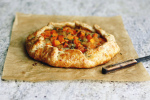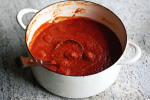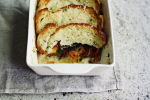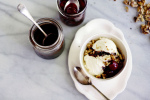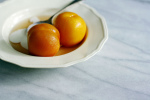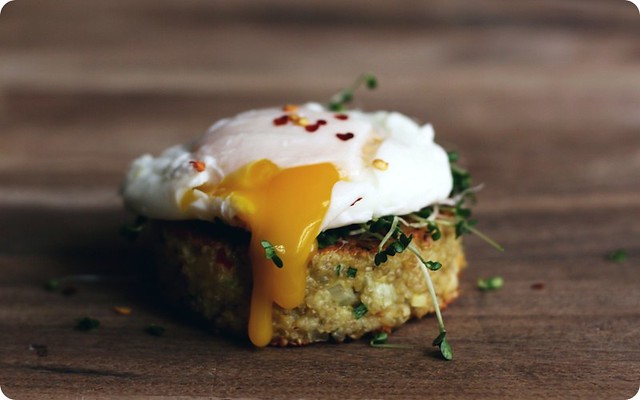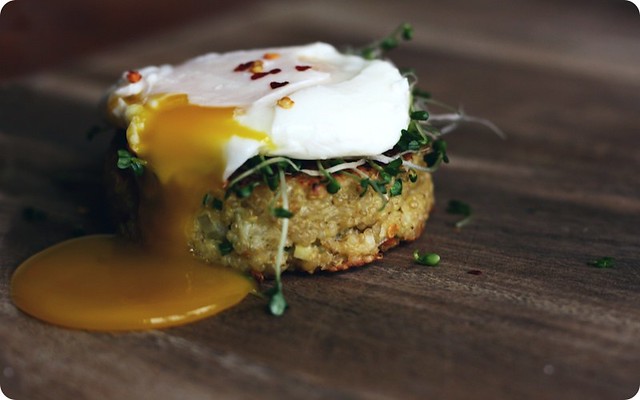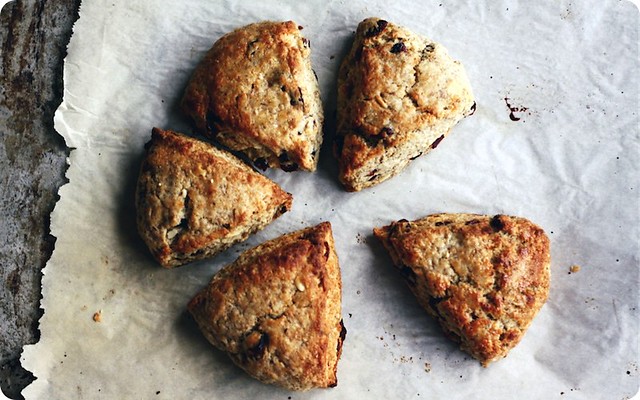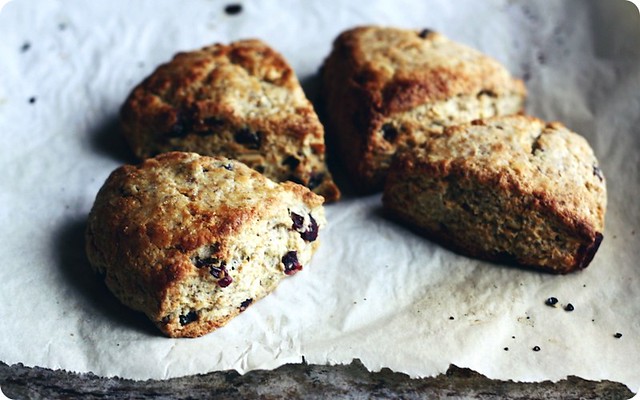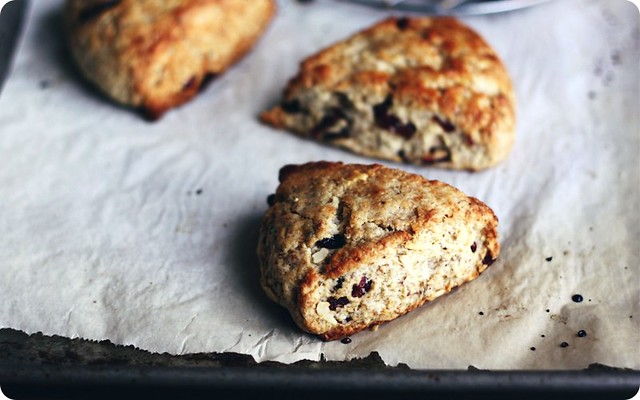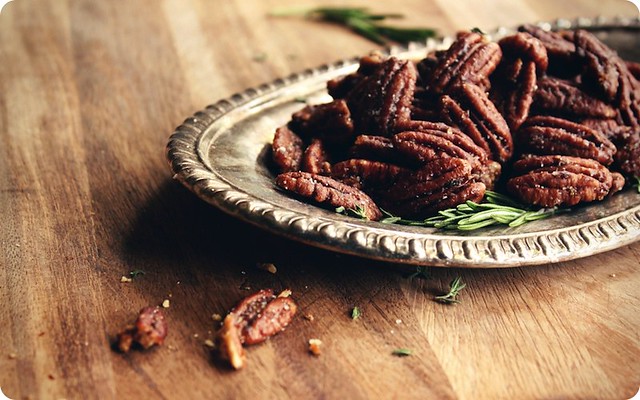Heidi, well done.
 Thursday, April 7, 2011 at 3:55PM
Thursday, April 7, 2011 at 3:55PM It is difficult to come up with something original to say about Heidi Swanson, when she's such an original herself. It's even harder when everyone else is talking about her, and her fantastic new book, Super Natural Every Day, as they should be.
Nonetheless I'll add my voice to the chorus of deserved cheers and say, "wow Heidi, well done."
Like it was for countless others, Heidi's site, 101 Cookbooks, was one of the first food blogs I read. Her photographs were what caught my attention - the simple, honest styling, the softness of light - but it was her that kept me reading. And cooking. There's a laundry list of recipes from 101 Cookbooks that are part of my family's routine. Like the images she captures, the food Heidi creates is beautifully direct. There isn't a lot of extraneous fuss for the sake of fanciness; if she suggests an ingredient or method, you can be well-assured there's good reason behind it.
It is this thoughtful approach to cooking that is so appealing about Heidi; it's as obvious in her meals as it is in the words she chooses to describe them. Her tone is gentle and welcoming, convivial while instructive.
Super Natural Every Day carries on as the elegant extension of Heidi's site, and follows up her highly-acclaimed book Super Natural Cooking. For those unfamiliar with Heidi's food philosophy, she promotes a vegetarian, whole-foods kitchen, with a detailed emphasis on unrefined sweeteners, whole grains, and conscientious choices of fats. That said, Heidi isn't one to sermonize; she lives her life, cooks her food and tells you about it. It's accessible, easy cooking that is delicious first and foremost, full stop, without asterisk or side note - the fact that it's good for you is an added bonus.
The book is an obviously personal one. Heidi shares favourite recipes from her repertoire alongside evocative photographs of her day to day. There's an intimacy to her voice that brings you into her kitchen, and her notes on each dish show an unmistakable familiarity that only comes from a heartfelt enthusiasm. Heidi moves easily between influences - there's dukkah, harissa and gribiche in here, tinto de verano and macaroon tarts. The flavours are varied and celebrated, like the well-worn bits and pieces of a treasured scrapbook, and her recipes are testaments to her affection for them.
One dish that I think serves as great example to Heidi's style is her Little Quinoa Patties. A seemingly humble collection of ingredients, quinoa, eggs, and breadcrumbs, are punctuated by fresh onion, chives, garlic and a grating of cheese. Pan-fried until crusted and golden the cakes get unexpectedly gutsy; the exterior deeply caramelizes, especially where the onion catches, and turn aromatically nutty. The interior is soft and bouncy, with the curlicues (Heidi's word) of quinoa still sweet and mild. She suggests them hot or cold as a snack. We ate ours with poached eggs and broccoli sprouts on a rain-sodden afternoon.
After the plates were scraped clean and the kettle was put up for tea, someone said to me "I would eat that every day."
You couldn't hope for higher praise. I'll say it again, Heidi, well done.
(p.s. and happy birthday today, too!)
*******
I've been having to sit on my hands to keep from telling you all about UPPERCASE Issue #9 - it's the food issue! That's right, page upon beautiful page full of stories on all aspects of food and garden. It's going to be good.
In the Kitchen column I'll be talking about honey, offering up a recipe for Butter Roasted Walnuts with Thyme Infused Honey and chitchatting about honey varietals.
On top of that, I'm terribly excited to tell you that I was also granted the opportunity to talk with Heidi Swanson, Carrie and Andrew Purcell and Aran Goyoaga to discuss food photography and styling. In the interviews we explore their varied approaches and perspectives when it comes to photographing food; their answers are both educational and inspiring. I can't wait for you to see it and I can't thank them enough for taking part.
UPPERCASE #9 will be out in the coming weeks. It's available here online, or check the magazine's website for your local stockist.
*******
Late breaking, and just added, the folks at Saveur magazine were exceptionally nice in asking a few questions as part of their "Sites We Love" series. I'm in better company than I could dream, and thank them for their kindness. If you'd like to see the interview, it's now live.
Little Quinoa Patties
From the book Super Natural Every Day by Heidi Swanson (Ten Speed Press, 2011).
Anytime I have leftover cooked quinoa, I make these little patties. They are good hot or cold and are well suited to fighting afternoon hunger pangs. It's a bit of a stretch, but they could be described as a (very) distant cousin of arancini, Italy's beloved deep-fried risotto balls. In contrast, these are pan-fried in a touch of oil, and smushed flat in the pan to get as much surface browning as possible. I'm including my basic version, but often times I'll add a handful of very finely chopped this-or-that: broccoli, asparagus, or cauliflower, depending on the season. They're great on their own, slathered with ripe avocado or drizzled with hot sauce. - HS
Ingredients
2 1/2 cups / 12 oz / 340 g cooked quinoa, at room temperature
4 eggs, beaten
1/2 teaspoon fine-grain sea salt
1/3 cup / .5 oz / 15 g finely chopped fresh chives
1 yellow or white onion, finely chopped
1/3 cup / .5 oz / 15 g freshly grated Parmesan or Gruyère cheese
3 cloves garlic, finely chopped
1 cup / 3.5 oz / 100 g whole grain bread crumbs, plus more if needed
Water, if needed
1 tablespoon extra-virgin olive oil or clarified butter
Combine the quinoa, eggs, and salt in a medium bowl. Stir in the chives, onion, cheese, and garlic. Add the bread crumbs, stir, and let sit for a few minutes sot that the crumbs can absorb some of the moisture. At this point, you should have a mixture you can easily form in to twelve 1-inch / 2.5 cm thick patties. I err on the very moist side because it makes for a not-overly-dry patty, but you can add a mroe bread crumbs, a bit at a time, to firm up the mixture, if need be. Conversely, a bit more beaten egg or water can be used to moisten the mixture.
Heat the oil in a large, heavy skillet over medium-pow heat, add 6 patties, if they'll fit with some room between each, cover, and cook for 7 to 10 minutes, until the bottoms are deeply browned. Carefully flip the patties with a spatula and cook the second sides for 7 minutes, or until golden. Remove from the skillet and cool on a wire rack while you cook the remaining patties.
Alternatively, the quinoa mixture keeps nicely in the refrigerator for a few days; you can cook the patties to order, if you prefer.
Makes 12 little patties.
A note from Tara:
- If it's your thing, I added about a 1/2 teaspoon of crushed red pepper flakes to the uncooked quinoa mixture. I think some fresh chili would work too.
 101 cookbooks,
101 cookbooks,  heidi swanson,
heidi swanson,  quinoa in
quinoa in  breakfast,
breakfast,  light lunch,
light lunch,  side dish,
side dish,  snack
snack 

